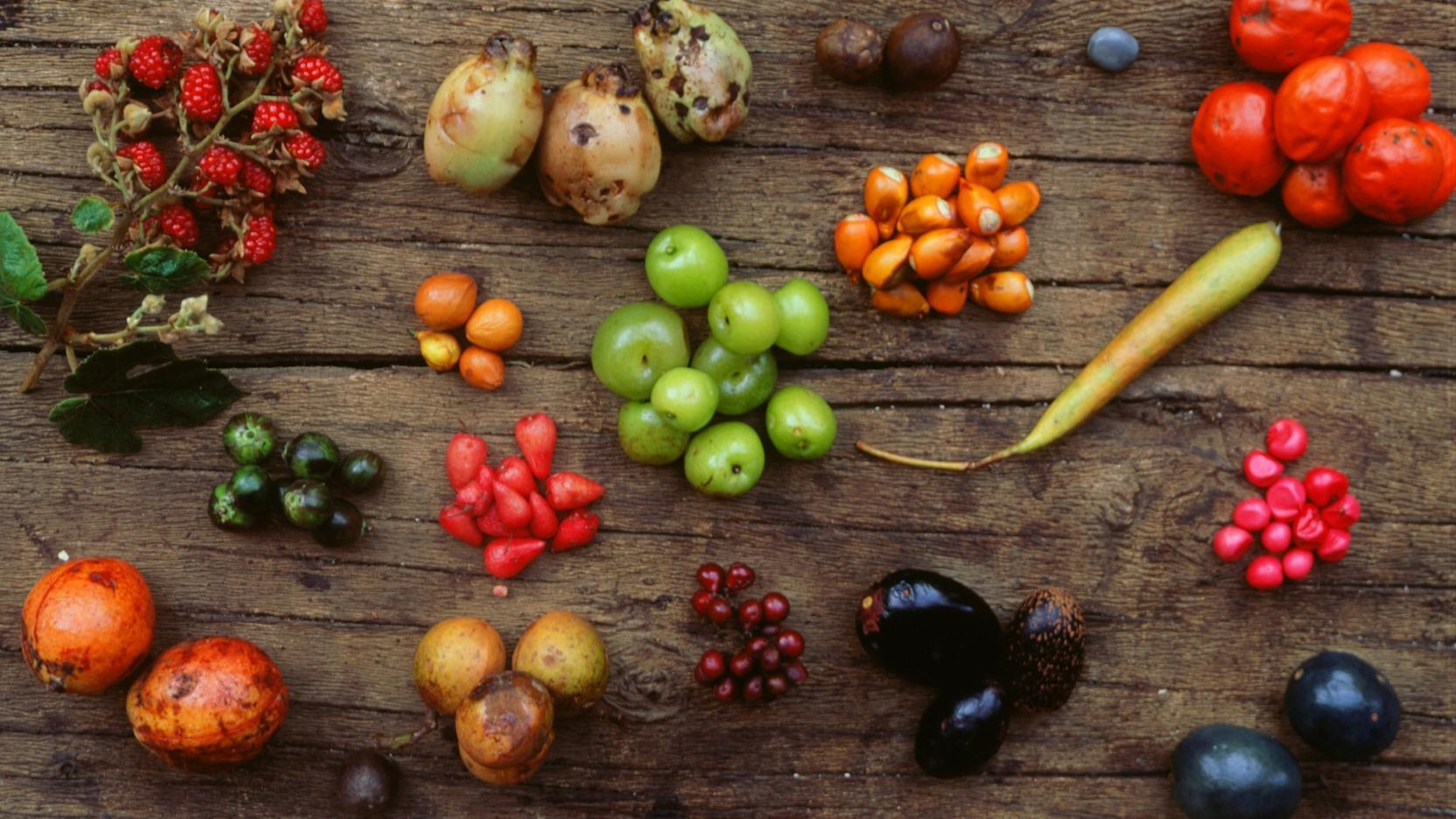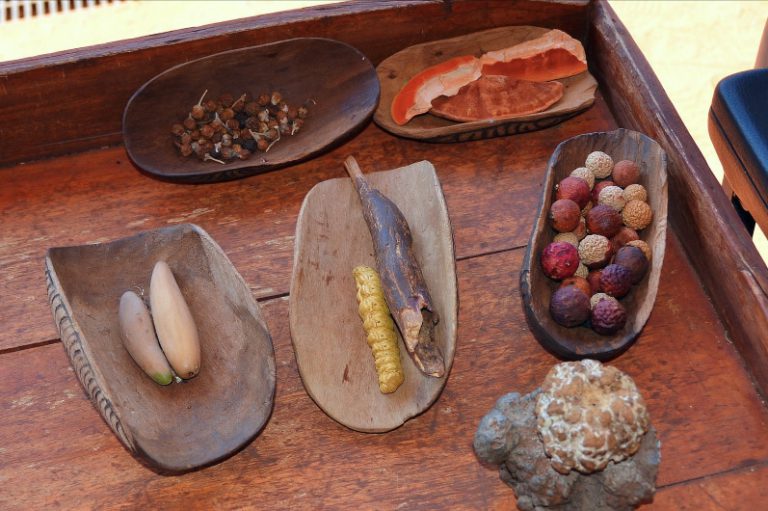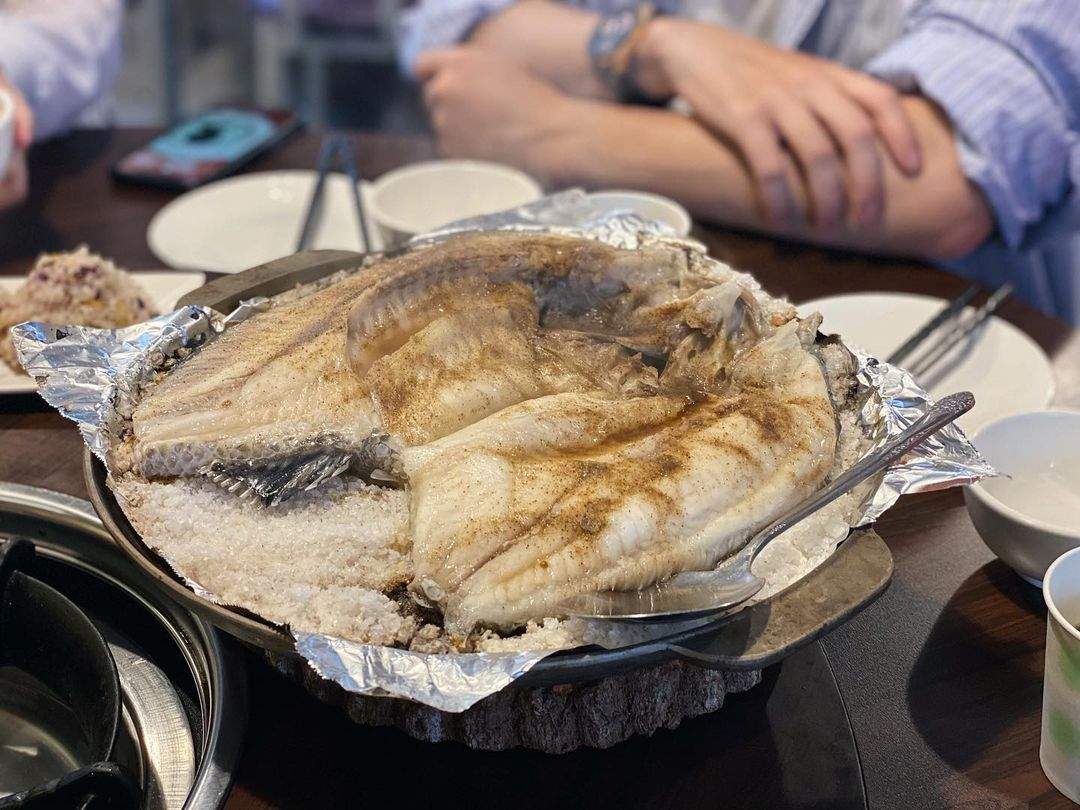A Bounty of Flavors: Exploring the Delicious World of Aboriginal Fruits
A Bounty of Flavors: Exploring the Delicious World of Aboriginal Fruits

Australia, a land of vast landscapes and ancient cultures, boasts a diverse and fascinating array of native fruits. For thousands of years, Aboriginal Australians have cultivated and consumed these fruits, integrating them into their diet, medicine, and spiritual practices. Today, these unique and flavorful fruits are gaining recognition for their nutritional value, culinary potential, and cultural significance.
This article delves into the captivating world of Aboriginal fruits, exploring their history, nutritional benefits, culinary applications, and the crucial role they play in preserving Indigenous knowledge and culture.
Related Articles: A Bounty of Flavors: Exploring the Delicious World of Aboriginal Fruits
- The Bear Paw Print: A Symbol Of Strength, Protection, And Connection
- A Journey Through Flavors: Exploring The Rich Tapestry Of Traditional Aboriginal Food
- A Taste Of The Exotic: Discovering Australia’s Unique Fruit Paradise
- Beyond The Animal: Understanding The Profound Meaning Of Totems In Aboriginal Cultures
- Unveiling The Stories: A Journey Into The World Of Aboriginal Art Masks
A Tapestry of Taste and Tradition
Aboriginal fruits, often referred to as bush tucker, represent a rich and diverse tapestry of flavors, textures, and aromas. From the tangy sweetness of the Davidson plum to the earthy richness of the quandong, these fruits offer a unique culinary experience.
A Glimpse into the Past:
For millennia, Aboriginal people have held a deep understanding of the land and its bounty. They developed intricate knowledge systems about the seasons, the growth cycles of plants, and the medicinal properties of various species. This knowledge was passed down through generations, ensuring the sustainable harvesting and utilization of these precious resources.
Nutritional Powerhouses:
Aboriginal fruits are not just delicious; they are also nutritional powerhouses packed with essential vitamins, minerals, and antioxidants.
Here are some examples:
- Kakadu plum: Renowned for its exceptionally high vitamin C content, the Kakadu plum is a potent antioxidant and a natural immune booster.
- Quandong: This fruit is rich in vitamin A, iron, and fiber, making it a valuable source of nutrients for overall health.
- Davidson plum: This tart fruit is high in antioxidants and vitamin C, offering potential benefits for heart health and immunity.
- Finger lime: This citrus fruit is a good source of vitamin C and antioxidants, while its unique caviar-like texture adds a burst of flavor to dishes.
- Bush tomato: A versatile fruit, the bush tomato is rich in vitamin A, iron, and fiber, and has been used traditionally for its medicinal properties.


Cultivating a Sustainable Future:
In recent years, there has been a growing interest in reviving and promoting the use of Aboriginal fruits. This movement is driven by several factors:
- Preserving Indigenous Knowledge: Promoting the use of Aboriginal fruits helps preserve traditional knowledge and cultural practices, fostering a deeper understanding and appreciation of Indigenous culture.
- Supporting Sustainable Agriculture: Cultivating and harvesting Aboriginal fruits can contribute to sustainable agriculture practices, promoting biodiversity and reducing reliance on monocultures.
- Promoting Health and Wellness: The nutritional benefits of Aboriginal fruits are becoming increasingly recognized, encouraging a shift towards healthier and more sustainable dietary choices.
- Elevating Culinary Experiences: The unique flavors and textures of Aboriginal fruits are inspiring chefs and food enthusiasts, leading to the development of innovative and delicious dishes.

Beyond the Plate: The Cultural Significance
Aboriginal fruits are not just food; they are deeply intertwined with Indigenous culture and spirituality. They are often used in ceremonies, traditional medicine, and storytelling.
- Ceremonial Use: Many Aboriginal fruits hold significant cultural value and are used in ceremonies and rituals. For example, the wattle seed is often used in ceremonies to symbolize new beginnings and growth.
- Traditional Medicine: Aboriginal people have a long history of using native fruits for medicinal purposes. The leaves, bark, and seeds of these plants are often used to treat various ailments.
- Storytelling: Aboriginal fruits are often featured in traditional stories and songs, passed down through generations, preserving cultural knowledge and traditions.
The Future of Aboriginal Fruits
The future of Aboriginal fruits is bright. As awareness of their nutritional value, culinary potential, and cultural significance grows, these fruits are poised to become a staple in kitchens and communities across Australia and beyond.
Here are some initiatives contributing to this growth:
- Research and Development: Ongoing research is exploring the nutritional and medicinal properties of Aboriginal fruits, leading to the development of new products and applications.
- Community Gardens and Farming: Indigenous communities are establishing gardens and farms to cultivate and promote Aboriginal fruits, ensuring their availability and supporting economic development.
- Culinary Innovation: Chefs and food enthusiasts are incorporating Aboriginal fruits into their dishes, showcasing their unique flavors and textures, and raising awareness of their cultural significance.
- Educational Programs: Schools and universities are incorporating Aboriginal food culture into their curriculum, educating future generations about the importance of these traditional foods.
FAQs About Aboriginal Fruits
1. Where can I find Aboriginal fruits?
Aboriginal fruits are available in a variety of places, including:
- Specialty stores: Some specialty stores and farmers’ markets carry a selection of Aboriginal fruits.
- Online retailers: Several online retailers offer a range of Aboriginal fruits, both fresh and processed.
- Indigenous-owned businesses: Many Indigenous-owned businesses cultivate and sell Aboriginal fruits directly.
- Bush tucker tours: Participating in bush tucker tours can provide an opportunity to learn about and taste a variety of Aboriginal fruits.
2. How do I prepare and eat Aboriginal fruits?
The preparation and consumption of Aboriginal fruits vary depending on the specific fruit. Some fruits can be eaten raw, while others require cooking or processing. It’s important to consult reliable sources for information on the best ways to prepare and consume each fruit.
3. Are Aboriginal fruits safe to eat?
Most Aboriginal fruits are safe to eat, but it’s essential to be aware of potential allergies or sensitivities. Always consult with a health professional or knowledgeable source before consuming any new food.
4. How can I support the preservation of Aboriginal food culture?
There are many ways to support the preservation of Aboriginal food culture:
- Learn about Aboriginal food traditions: Take the time to learn about the history, culture, and significance of Aboriginal fruits.
- Support Indigenous-owned businesses: Purchase Aboriginal fruits from Indigenous-owned businesses whenever possible.
- Share your knowledge: Educate others about the value of Aboriginal fruits and encourage them to incorporate them into their diets.
- Advocate for the recognition and protection of Indigenous knowledge: Support initiatives that promote the preservation and recognition of Indigenous knowledge systems related to food and agriculture.
Conclusion
The world of Aboriginal fruits offers a rich tapestry of flavors, textures, and cultural significance. From their nutritional powerhouses to their role in preserving Indigenous knowledge, these fruits are a testament to the ingenuity and wisdom of Aboriginal people. By embracing these unique and delicious fruits, we can contribute to a more sustainable and culturally diverse future.

Closure
Thus, we hope this article has provided valuable insights into A Bounty of Flavors: Exploring the Delicious World of Aboriginal Fruits. We hope you find this article informative and beneficial. See you in our next article!


